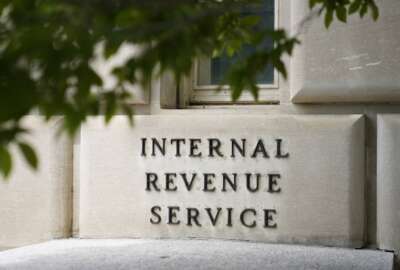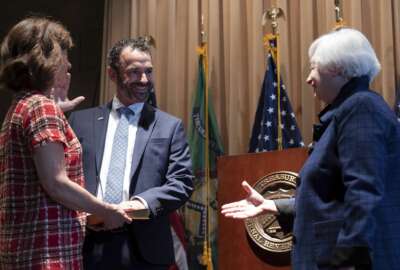

IRS Commissioner Danny Werfel says the the agency will, in the coming weeks, shed more light on the agency’s hiring plans over the next decade.
The IRS, after wrapping up this year’s filing season with significantly improved service, compared to recent years, is planning to bring the agency’s long-term hiring needs into focus.
IRS Commissioner Danny Werfel told the Senate Finance Committee on Wednesday that the agency will, in the coming weeks, shed more light on the agency’s hiring plans over the next decade.
The IRS Strategic Operating Plan released earlier this month only includes proposed hiring through the end of fiscal 2024.
Under the plan, the IRS is looking to hire more than 10,000 employees before the end of this fiscal year, and approximately another 10,000 employees in fiscal 2024. Most of the hiring is focused on taxpayer services and enforcement.
Werfel said the nearly $80 billion the IRS received in the Inflation Reduction Act gives the agency “long-term resources” to take up long-deferred investments in its workforce and legacy IT over the next decade.
However, he said Congress, through annual appropriations, will need to provide the IRS “adequate annual funding for day-to-day operations.”
“This year, we proved that dramatic improvement is possible. The question is whether we can continue to improve,” Werfel said.
Using about 1% of the nearly $80 billion received in the Inflation Reduction Act, the IRS went from answering 15% of calls in 2022 to answering 87% of calls this year.
“If we’re funded at a steady level or cut, then all we can do is maintain our current operations,” Werfel said. “We have to make investments to deal with this complexity of what we see today.”
Republican lawmakers, however, remain wary of what the IRS can do with the multi-year funding.
Sen. Steve Daines (R-Mont.) warned the IRS of prematurely taking a “victory lap” over its improved performance this year.
Werfel, however, said it was important for the public to understand that “when we are funded at the right level, then we can be there to answer the call,” and that taxpayers aren’t stuck with long wait times over the phone.
“If we don’t have that funding, and we can’t staff the customer service centers with the right amount of people — it’s just math. It’s a question of volume, can we meet the demand? And I think that’s why we want to celebrate this,” Werfel said.
Sen. Todd Young (R-Ind.) also warned the IRS of celebrating too soon, and said IRS call metrics looked better this year because fewer taxpayers picked up the phone to reach the agency.
Werfel, however, said a lower volume of calls could be an indication that the IRS’s efforts to move more of its services online could be working.
“If you say that the call volume went down, that’s actually a good thing. That means that our website is working effectively. That means that our apps are working on our smartphones more effectively,” Werfel said.
The Inflation Reduction Act funds are also meant to beef up the IRS enforcement capabilities, particularly to go after taxes owed by the very wealthy.
Deputy Treasury Secretary Wally Adeyemo said Monday that the IRS has the same level of staffing as it did in the 1970s, and that the top 1% of U.S. earners account for about $160 billion in uncollected taxes every year.
Werfel said the IRS’s audit rate of high-wealth individuals is “historically low,” and even with additional funding, it will take years to rebuild the IRS’ capacity to audit wealthy individuals and businesses.
“Even once we feel like we’ve done the necessary capacity-building in the high-wealth area, then it will take years to even get close to what might be a historical average versus where we are today,” he said.
Werfel said the IRS currently has about 2,600 staff that handle high-income taxpayers and corporations. But the agency estimates there are 390,000 high-wealth individuals and businesses.
Werfel said those of these filings can total in the “hundreds of thousands of pages.”
“Every dollar we move off of our efforts to build the capacity to unpack those returns means, I think we’re leaving money on the table for the American people, in terms of our ability to close the gap, in terms of what’s paid versus what’s owed,” Werfel said.
Senate Minority Whip John Thune (R-S.D.) told reporters on Tuesday that the current IRS workforce is comprised of two enforcement personnel for every taxpayer services employee.
Thune said that by 2025, the IRS workforce would grow to 105,000 employees — a 45% increase in staffing levels — and that the agency would have 14 enforcement personnel for every taxpayer services employee.
“On behalf of the American people, it’s up to us to try and hold this agency accountable and realize that, in the end, it’s the American people who are paying the price for all this, and what they’re going to [get] caught up in is a lot more audits and a lot less service,” Thune said.
Many of these hires, however, are also meant to bring a new generation into an aging IRS workforce.
Nearly two-thirds of the IRS workforce will be eligible for retirement in the next six years, and the IRS said a “growing number of newer employees are voluntarily resigning,” according to the agency’s Strategic Operating Plan.
Thune said during the committee hearing Wednesday that he and Sen. Chuck Grassley (R-Iowa) are working on the IRS Funding Accountability Act, a bill that would scrutinize the agency’s “massive infusion of dollars in resources and employees.”
Thune also urged Werfel to “reconsider your priorities,” and focus more on hiring and spending on improved taxpayer service, rather than enforcement.
Committee Chairman Ron Wyden (D-Ore.) said staffing up IRS enforcement and taxpayer services “aren’t mutually exclusive,” and that the agency can do both.
” We desperately need to improve services, our citizens are telling us that’s important. But we also need enforcement, because that’s what the tax gap is all about,” Wyden said.
Werfel also reiterated the IRS’s pledge to not increase the audit rate for those making less than $400,000 a year.
“If you’re a small business … our focus for you is improved service. It’s not some wave of audits,” Werfel said.
Werfel said the $80 billion will allow the IRS to tackle longer-term solutions, such as hiring more employees or investing in technology that will allow the IRS to scan and automate more of its paper-based workload.
He also said IRS would use its long-term funding to make sure historically underserved taxpayers receive tax credits they qualify for, and ensure the IRS stays on top of emerging tax scams.
“We need to make clear that more often than not, if someone’s telling you that they’re from the IRS, they’re not and it’s a scam. It’s not easy to navigate, but we do need to at times, and we’re going to try to be as transparent as possible to reach out to taxpayers. I’m really committed to creating a culture in the IRS where when we’re doing outreach, it’s to help,” Werfel said.
Werfel said the IRS using its multi-year funds will be able to finally buckle down to a modernization of the Individual Master File that’s now on track to be completed by 2028.
The IMF modernization, he added, is “years overdue in terms of being fully modernized.”
“With a more technologically sophisticated platform, we can automate more, we can do more, we can meet emerging requirements more quickly,” Werfel said.
Copyright © 2025 Federal News Network. All rights reserved. This website is not intended for users located within the European Economic Area.
Jory Heckman is a reporter at Federal News Network covering U.S. Postal Service, IRS, big data and technology issues.
Follow @jheckmanWFED



